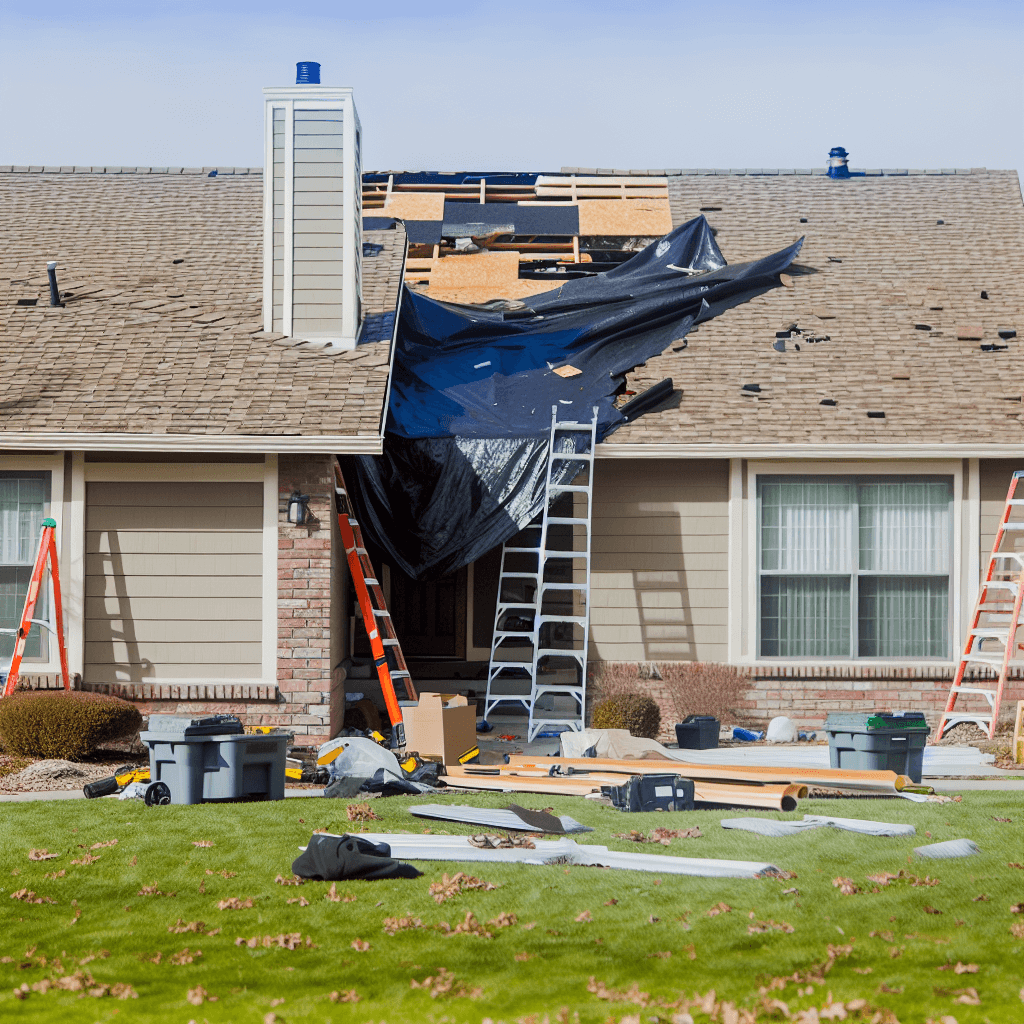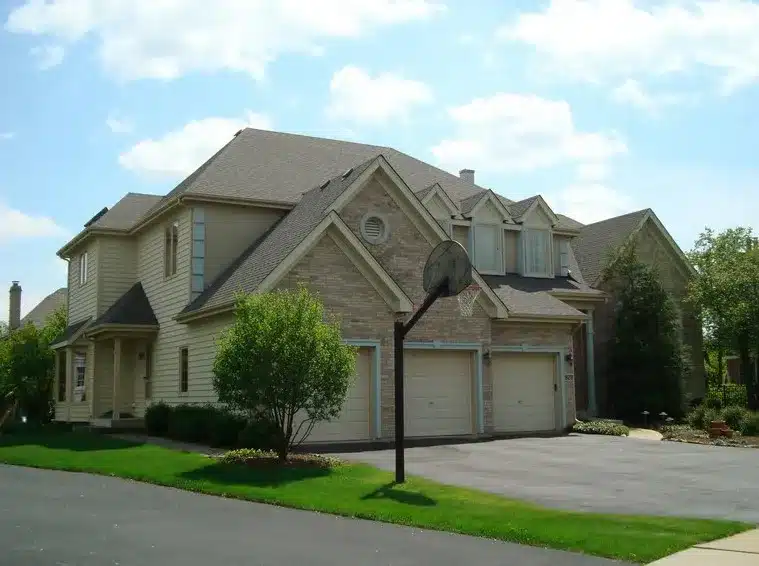• Step-by-step repair guide for handling emergency roof damage effectively.
• Professional tips for assessing and securing your roof to prevent further destruction.
• Importance of consulting experts for safe and efficient repairs – the optimal route to restoring your roof’s integrity.
Identifying Emergency Roof Situations
When the integrity of your roof is compromised, swift action is necessary to safeguard your home. The first step is to assess the severity of the damage visible from the ground; this may include broken shingles, noticeable roof dips, or debris from a recent storm that signifies a need for emergency roof damage response. It’s crucial to determine the immediacy of the repair needs, distinguishing between minor damages that can temporarily hold and severe impairments that require instant attention. Hazards like tangled power lines or a compromised roof structure demand immediate professional intervention.
Preventing Further Interior Harm
With roof damage often comes the risk of interior water damage, a secondary problem you’ll want to avert. Should there be water entry, strategically placing buckets underneath leaks is a pivotal interim solution to control potential water damage. To prevent damage to household belongings, swiftly relocate items away from the leak’s vicinity. Such proactive interior damage control aids in minimizing restoration efforts post-repair.
Meticulous Documentation Is Key
In the wake of roof damage, detailed record-keeping becomes your ally, especially when it comes to filing insurance claims or providing evidence to roofing professionals. To capture the extent of the destruction, take multiple photographs and videos from every angle. This ensures you have substantial proof of the initial state of damage before any temporary measures or repairs are applied. Accurate documentation not only aids in the smooth processing of claims but also assists in relaying the scope of damage to emergency responders.
Temporary Measures to Mitigate Damage
When faced with emergency roof damage response, temporary measures can be crucial to prevent additional harm until professional repairs can be made. Applying a sturdy tarp to cover exposed areas can act as an effective barrier against further water infiltration. It is essential to secure the tarp properly, ensuring it withstands any immediate weather conditions. However, this is a temporary solution, and one must proceed with caution while climbing onto a damaged roof, prioritizing safety at all times.
Reaching Out to Roofing Specialists
After ensuring temporary protection, the next critical step is to contact roof repair professionals who can handle the emergency with expertise. By visiting Owen Enterprises Inc., you can find experienced contractors equipped to manage urgent roof repairs effectively. Credentialed experts will offer peace of mind and guarantee that the work done meets all required standards for safety and durability. Ensure you communicate the intricacies of the damage to enable them to prepare adequately before arriving to address the issue.
Step 1: Assess the Situation
Begin by evaluating the extent of the roof damage. Determine if it’s a minor issue that can wait or if it’s an emergency that needs immediate attention. Assess for any hazards, such as electrical lines or structural concerns, before proceeding.
Step 2: Control the Interior Damage
If the roof damage has caused leaks, place buckets under any drips to collect water. Move valuables and furniture away from the affected area to prevent water damage.
Step 3: Document the Damage
Take clear photos and videos of the roof damage from multiple angles. This documentation will be vital for insurance claims or for professional evaluations.
Step 4: Apply Temporary Fixes
For minor issues, apply temporary fixes such as tarps or roof patches to prevent further water ingress. Ensure you do this safely and only if you are confident in doing so.
Step 5: Contact a Professional
Reach out to a professional roofing service specializing in emergency responses. Give them a detailed account of the issue and send them the pictures you’ve taken.
Step 6: Review Credentials
Before any work begins, ensure the roofing company is licensed and insured. Verify their expertise in emergency roof damage response, specifically.
Step 7: Assess the Professional’s Plan
Review the detailed plan the roofer provides, which should outline the scope of the work, materials needed, timelines, and costs. This will also help inform your insurance claim.
Step 8: Monitor the Repair Process
As the experts work on repairing your roof, monitor the progress to ensure it matches the discussed plan. Communicate any concerns or questions you have immediately to the roofing team.
Common DIY Mistakes to Avoid During Emergency Roof Repairs
Tackling roof damage may seem doable, but there are pitfalls every homeowner should be aware of. Without proper knowledge and tools, DIY emergency roof repair attempts can lead to further damage or personal injury. Understanding common mistakes can help prevent worsening the situation and ensure that your immediate actions are protective rather than detrimental.
Mistake 1: Underestimating the Severity of Damage
Many homeowners may not possess the expertise to accurately assess roof damage’s seriousness, mistaking what seems like a small issue for one that doesn’t require urgent attention. This can be avoided by seeking professional assessments, especially for emergency roof damage response, to recognize the full extent of the damage.
Mistake 2: Neglecting Interior Protection Measures
Failing to move furniture or collect dripping water can lead to significant interior damage, which is a frequently overlooked yet preventive step during emergencies. Always prioritize interior protection by relocating items susceptible to water damage and using containers to catch leaks.
Mistake 3: Poor Documentation Practices
Inadequate documentation or not taking any photos can severely complicate insurance claims. Take the time to thoroughly document all damage before applying any temporary fixes, as this evidence is crucial for both insurance purposes and professional evaluations.
Mistake 4: Unsafe Temporary Repairs
A common error is attempting temporary repairs without considering safety, especially when working at heights or with potentially compromised structures. Always ensure safety measures are in place, and avoid temporary fixes on a compromised roof unless you’re certain it’s safe to do so.
Mistake 5: Delaying Professional Help
Many try to handle repairs beyond their skillset, which can exacerbate the damage. It’s crucial to reach out to professionals, as they have the experience and tools for an effective emergency roof damage response.
Mistake 6: Not Verifying Contractor Credentials
Hiring a contractor without ensuring they are licensed and insured can lead to liability issues and substandard work. Trust in verified services to avoid these risks and to ensure a comprehensive and safe repair strategy.
Mistake 7: Miscommunication of the Repair Plan
Homeowners sometimes fail to understand or clarify the scope of repairs, which may result in surprises. Prevent this by discussing the detailed plan with your roofer beforehand, ensuring transparency and agreement on the work to be done.
Mistake 8: Lax Post-Repair Inspections
Failing to monitor the progress and completion of repairs can result in overlooked issues. Keep a close eye on the repair process to confirm that everything is carried out per the agreed plan, maintaining communication with your contractor throughout the process.
Credential Verification for Safety and Reliability
Ensuring the credentials of the roofing company you select is paramount for a reliable emergency roof damage response. Trustworthy companies, like Owen Enterprises Inc., will readily provide evidence of licensing and insurance, underscoring their commitment to quality and customer protection. It’s crucial to verify such details before work begins, giving you confidence in their ability to handle the complexities of roof repair with due diligence and skill.
Understanding the Scope of Roof Repairs
A transparent and detailed repair plan is essential for any emergency roofing job. This includes a clear outline of the work to be done, the materials required, and an accurate timeline. Such information eliminates surprises, allowing you to prepare mentally and financially for the task ahead, ensuring the repair process flows as smoothly and swiftly as possible.






